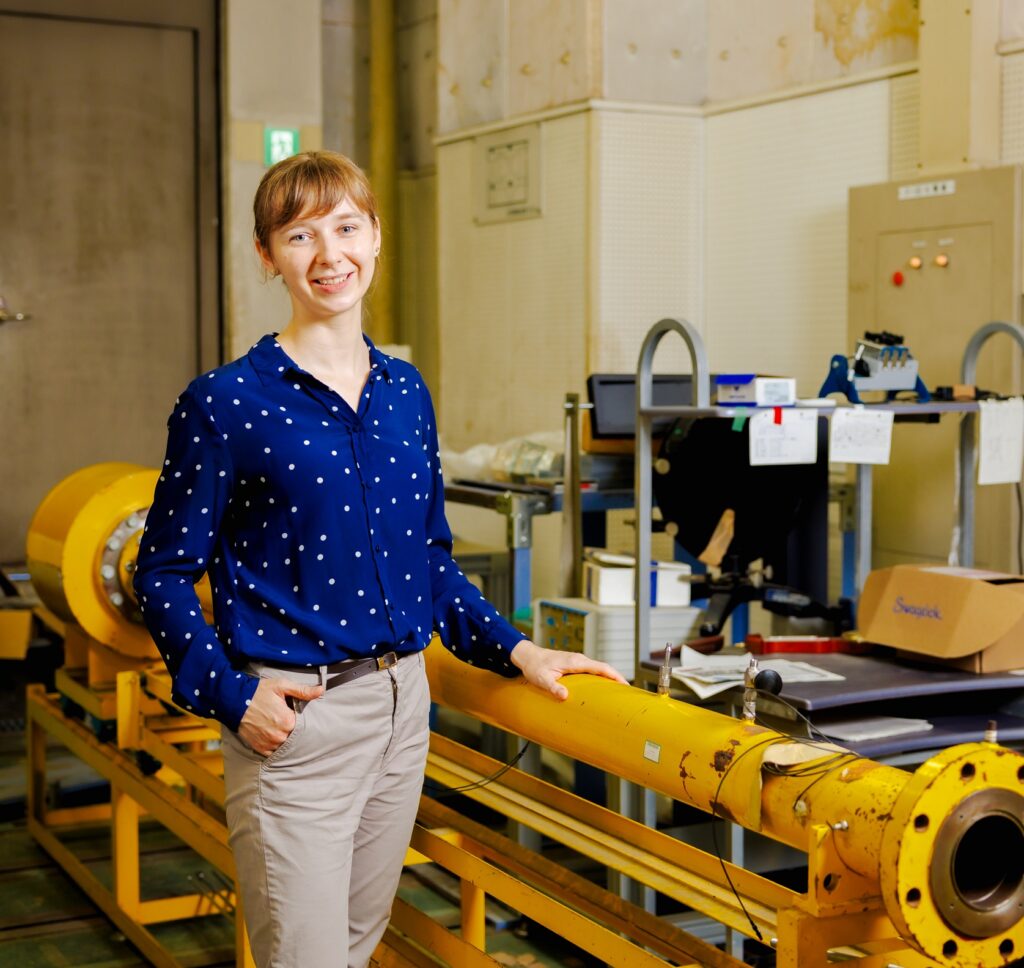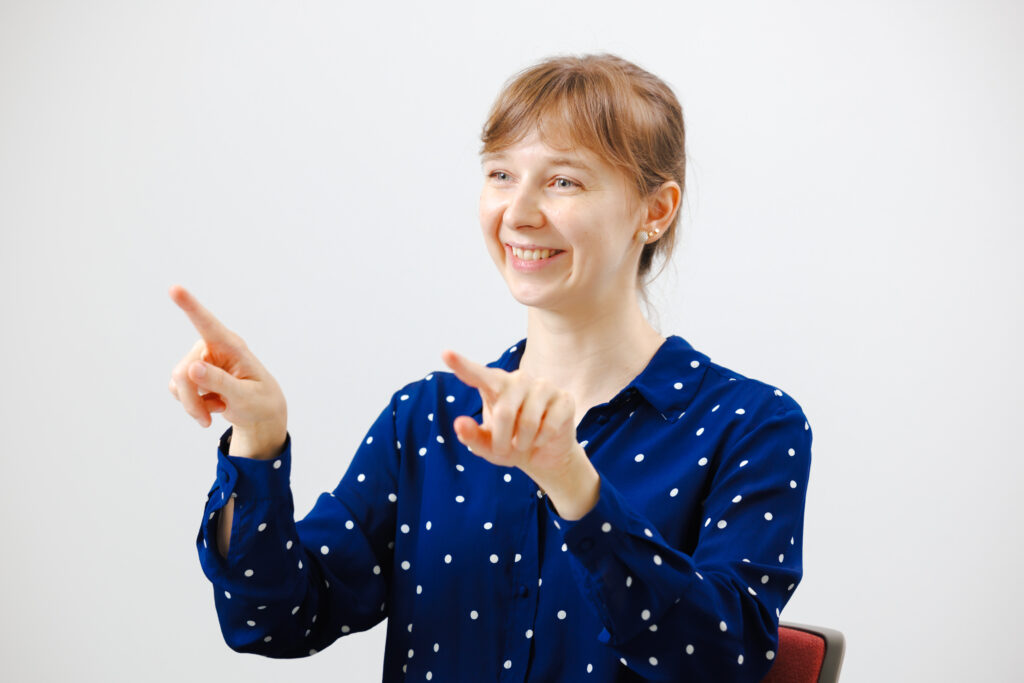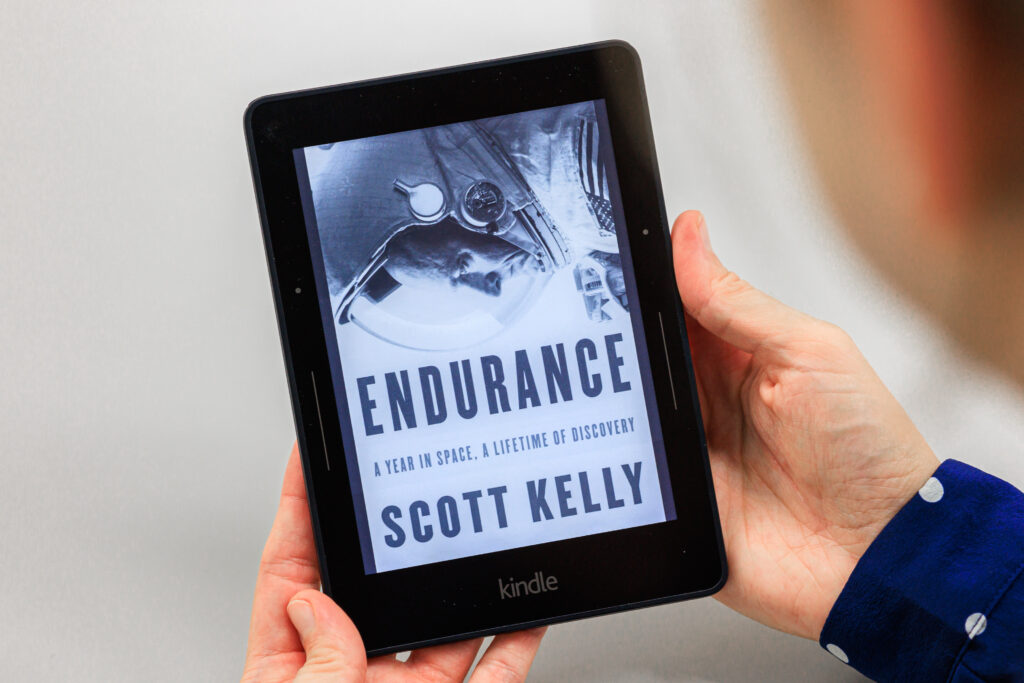
Specializing in combustion and fluid mechanics, Associate Professor Edyta Dzieminska researches novel combustion technologies which are crucial for the development of space rockets. She is also working on designs for UAVs (unmanned aerial vehicles) that can support disaster recovery efforts.
Within my specialty of combustion and fluid mechanics, improving safety technologies for air or space flight is an academic area of critical importance. My current research projects are involved in aircraft design, shockwaves (moving faster than the speed of sound ), and rotating detonation engines. The underground lab is located behind the library on the Yotsuya campus, and it’s where I undergo many trial and error experiments.
When we burn any fuel, like wood, gasoline, or hydrogen, we can determine the velocity at which this fuel is disappearing. Imagine that it can burn so fast that the combustion process happens faster than a local speed of sound. This phenomenon is called supersonic combustion, and instead of flame, a detonation wave will form. Taking hydrogen as an example, we can control this process and create a new, sophisticated rocket engine. Currently, in my lab, we are working on testing an engine like this called rotating detonation engine (RDE) in which combustion occurs at speeds close to 2000 meters per second.
We use a special free-piston shock tube within which we can recreate the atmosphere of a planet like Mars, containing carbon dioxide, nitrogen, and argon. Then, we generate a shockwave and observe what changes happen to the gas compounds. This research contributes to space flights entering a planet’s atmosphere that would need to withstand extreme forces.
In addition, we work on a rotating detonation engine which is necessary for the development of new, powerful, efficient space rocket engines.
Aiming to develop UAVs to support Fukushima recovery

In 2021, my students designed a UAV for the first time. They wanted to create something that could contribute to the recovery of Fukushima, which suffered from the nuclear plant disaster caused by the Great East Japan Earthquake in 2011. We have been working hard to equip the UAV with gamma-ray sensors and other data-collection functions. When it is completed, I think its first flight will be over Fukushima.
To create a UAV capable of acting reliably within a disaster zone, it has to have a long flight range. The one we use in the lab employs a box-shaped wing that reduces air resistance to lift. We calculate the various performance parameters using a supercomputer, and this data is used to carry out the design process.
I’ve also been engaged in research on morphing wings for quite some time. In modern airplanes, the wing flaps open, close, or adjust their angle during take-off, landing, or level flight based on movements of the airplane. However, with morphing wing technology, the wings are made of much more flexible material that can freely bend and elongate like a bird’s wings. By lowering drag and increasing lift, higher efficiency can be achieved.
In Japan, the Japan Aerospace Exploration Agency (JAXA) is involved in developing this technology, and they established a morphing technology research group several years ago. Although we work on aircraft performance, having a space to be able to share opinions and exchange information with material developers and researchers in related fields is extremely valuable.
Networking outside the lab is essential
In research, it is important to perform experiments in the laboratory, but also it is essential to connect and communicate with other researchers. Developing new technologies requires collaboration with other labs, universities, and research institutes. At international conferences, researchers actively share what they are doing with each other. Networking like this is the bedrock of new ideas and how we can come to understand global issues. For me personally, the support and advice from overseas and domestic companies, research institutes, and other universities with a wealth of experience have all been of enormous benefit and resulted in faster development.
The field of engineering requires communication with people from around the world, so knowing English is a must. I tell students that even as an engineer, they need to make sure to put effort into their English studies. New technologies are developed through the combined efforts of researchers worldwide. My aim is to conduct research that can contribute to global progress, even if it is in a small way.
The book I recommend
“Endurance: A Year in Space, a Lifetime of Discovery”
by Scott Kelly, published by Knopf

After I saw the movie “Top Gun,” I wanted to be a fighter pilot more than anything. Even now, I haven’t abandoned my current dream of becoming an astronaut, so I got lost in this book whose author spent 1 year on the International Space Station. Reading it gives me the courage that I can become an astronaut if I work hard enough.
-
Edyta Dzieminska
- Associate Professor
Department of Engineering and Applied Sciences
Faculty of Science and Technology
- Associate Professor
-
Edyta Dzieminska received a BE and ME from Warsaw University of Technology, followed by a PhD from Aoyama Gakuin University. In 2013-2014, she was an invited researcher at Aoyama Gakuin University, and afterward joined Sophia University in 2014 with the rank of Assistant Professor. Since 2019, she has continued her position at Sophia as an Associate Professor.
- Department of Engineering and Applied Sciences
Interviewed: July 2022